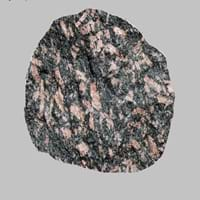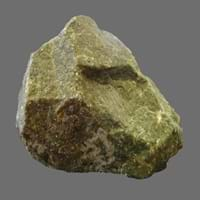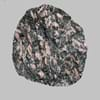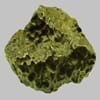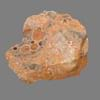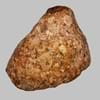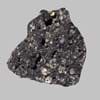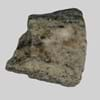Definition
Luxullianite is a rare type of granite, known for presence of clusters of radially arranged acicular tourmaline crystals which are enclosed by phenocrysts of orthoclase and quartz in a matrix of quartz, tourmaline, alkali feldspar, brown mica.
Dunite is a green to brownish coarse-grained igneous rock mainly consisting of olivine
Origin
England
New Zealand
Discoverer
Unknown
Ferdinand von Hochstetter
Etymology
From the village of Luxulyan in Cornwall, England, where this variety of granite is found
From the name of Dun Mountain, New Zealand, + -ite1
Class
Igneous Rocks
Igneous Rocks
Sub-Class
Durable Rock, Hard Rock
Durable Rock, Medium Hardness Rock
Other Categories
Coarse Grained Rock, Opaque Rock
Coarse Grained Rock, Opaque Rock
Texture
Granular, Phaneritic
Phaneritic
Color
Black, Grey, Orange, Pink, White
Dark Greenish - Grey
Durability
Durable
Durable
Scratch Resistant
Yes
Yes
Appearance
Veined or Pebbled
Rough and Shiny
Interior Uses
Bathrooms, Countertops, Decorative Aggregates, Entryways, Floor Tiles, Homes, Hotels, Interior Decoration, Kitchens, Stair Treads
Decorative Aggregates, Interior Decoration
Exterior Uses
As Building Stone, As Facing Stone, Paving Stone, Garden Decoration, Office Buildings
As Building Stone, As Facing Stone, Garden Decoration, Paving Stone
Other Architectural Uses
Curbing
Curbing
Construction Industry
As Dimension Stone
As Dimension Stone, Cement Manufacture, Construction Aggregate, for Road Aggregate, Making natural cement, Raw material for the manufacture of mortar
Medical Industry
Not Available
Not Available
Antiquity Uses
Artifacts, Monuments, Sculpture
Artifacts, Monuments, Sculpture, Small Figurines
Commercial Uses
Creating Artwork, Curling, Gemstone, Laboratory bench tops, Tombstones
Creating Artwork, Gemstone, Jewelry, Source of Chromite, Platinum, Nickel and Garnet, Source of Diamonds
Types
Igneous Protolith Granite, Sedimentary Protolith Granite, Mantle Granite, Anorogenic Granite and Hybrid Granite
Not Available
Features
Available in Lots of Colors and Patterns, It is One of the Oldest, Strongest and Hardest Rock
Constitutes upper part of the Earth's mantle, Generally rough to touch, Host rock for Diamond, Is one of the oldest rock
Archaeological Significance
Famous Monuments
Not Available
Not Available
Famous Sculptures
Not Available
Not Available
Pictographs
Not Used
Used
Petroglyphs
Not Used
Used
Formation
Luxullianite is an intrusive igneous rock which is very hard, crystalline and is visibly homogeneous in texture. It is found in large plutons on the continents, i.e. in areas where the Earth's crust has been deeply eroded.
Dunite is a plutonic ultramafic igneous rock consisting almost m olivine. It can be formed in two ways.
Mineral Content
Amphibole, Biotite, Feldspar, Hornblade, Micas, Muscovite or Illite, Plagioclase, Pyroxene, Quartz
Amphibole, Chromite, Garnet, Magnesium, Olivine, Phlogopite, Plagioclase, Pyroxene
Compound Content
Aluminium Oxide, CaO, Iron(III) Oxide, FeO, Potassium Oxide, MgO, MnO, Sodium Oxide, Phosphorus Pentoxide, Silicon Dioxide, Titanium Dioxide
Ca, CaO, Fe, Potassium, Silicon Dioxide, Sodium, Titanium Dioxide
Types of Metamorphism
Burial Metamorphism, Cataclastic Metamorphism, Contact Metamorphism, Hydrothermal Metamorphism, Impact Metamorphism
Burial Metamorphism, Cataclastic Metamorphism, Contact Metamorphism
Types of Weathering
Biological Weathering, Chemical Weathering, Mechanical Weathering
Biological Weathering, Chemical Weathering, Mechanical Weathering
Types of Erosion
Chemical Erosion, Water Erosion, Wind Erosion
Coastal Erosion, Glacier Erosion, Water Erosion
Grain Size
Large and Coarse Grained
Coarse Grained
Fracture
Not Available
Irregular
Porosity
Less Porous
Less Porous
Luster
Dull to Grainy with Sporadic parts Pearly and Vitreous
Shiny
Cleavage
Not Available
Not Available
Toughness
Not Available
2.1
Specific Gravity
2.6-2.7
3-3.01
Transparency
Opaque
Translucent to Opaque
Density
2.6-2.8 g/cm3
2.84-2.85 g/cm3
Resistance
Heat Resistant, Wear Resistant
Heat Resistant, Pressure Resistant, Wear Resistant
Deposits in Eastern Continents
Asia
China, India, Iran, Saudi Arabia, Sri Lanka, Taiwan, Thailand, Turkey, Vietnam
China, India, Indonesia, Kazakhstan, Russia, South Korea, Thailand, Turkey
Africa
Angola, Egypt, Madagascar, Namibia, Nigeria, South Africa
Morocco, South Africa
Europe
Austria, Belgium, Finland, France, Germany, Italy, Norway, Sardinia, Spain, Switzerland, The Czech Republic
Finland, France, Georgia, Germany, Great Britain, Italy, Kazakhstan, Netherlands, Norway, Spain, Switzerland
Others
Not Available
Not Available
Deposits in Western Continents
North America
Canada, USA
Canada, USA
South America
Not Available
Argentina, Brazil, Colombia, Ecuador, Venezuela
Deposits in Oceania Continent
Australia
Not Available
New Zealand, Western Australia
